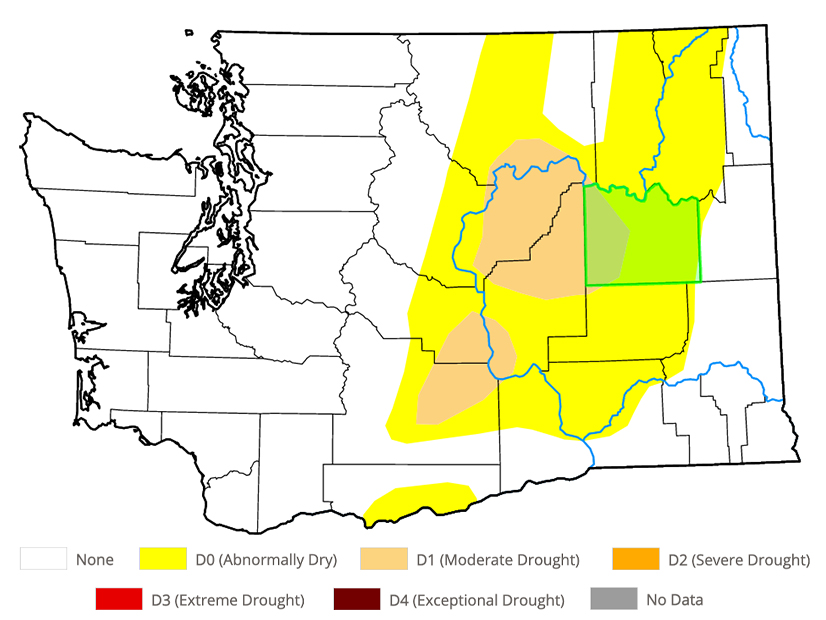
Washington state lifted its remaining drought designations last week because of an unexpectedly cool and wet May and June.
The unseasonably cool weather has caused Cascade Range snowpack to last longer into the summer, which will support late-summer water needs, Jeff Marti, statewide drought coordinator at Washington’s Department of Ecology, said in a statement.
“Conditions have improved. All areas of the state, including the five watersheds specified in the drought declaration, have received significantly above-normal precipitation,” Marti said. “The outlook is much better than forecast back in May.”
The wet weather doubled the normal June rainfall figures for much of Eastern Washington. “Conditions have been anything but drought-like,” Marti said. “We’ve experienced one of the wettest, coldest springs in recent memory.”
In July 2021, Gov. Jay Inslee declared a drought emergency for 96% of the state, citing the severe effects of climate change. Last year’s declaration sped up processing for emergency drought permits and allowed temporary transfers of water rights. The cities of Seattle, Tacoma and Everett were not included in the drought emergency because they have significant amounts of stored water.
On May 26, the area of Washington from the Cascades to the west was removed from the drought designation. Most of Eastern Washington, except for four areas, was designated as a drought advisory area. A “drought advisory” means that rainfall is above the 75% mark but could potentially drop below.
In May, five watersheds in areas spread across parts of eight northeastern counties were still in “drought emergency” because they had not received enough rainfall to recover. This land covers about 9% of the state. The drought emergency area covered parts of Spokane, Lincoln, Grant, Adams, Whitman, Stevens, Okanogan and Pend Oreille counties.
The lifting of drought designations addresses those Eastern Washington areas.

